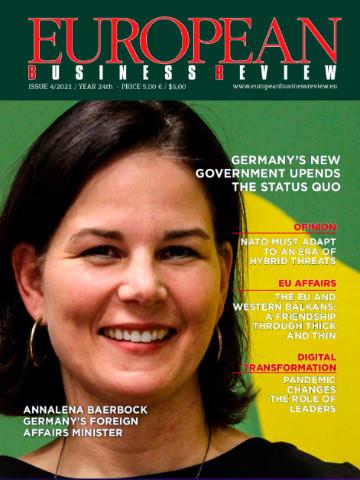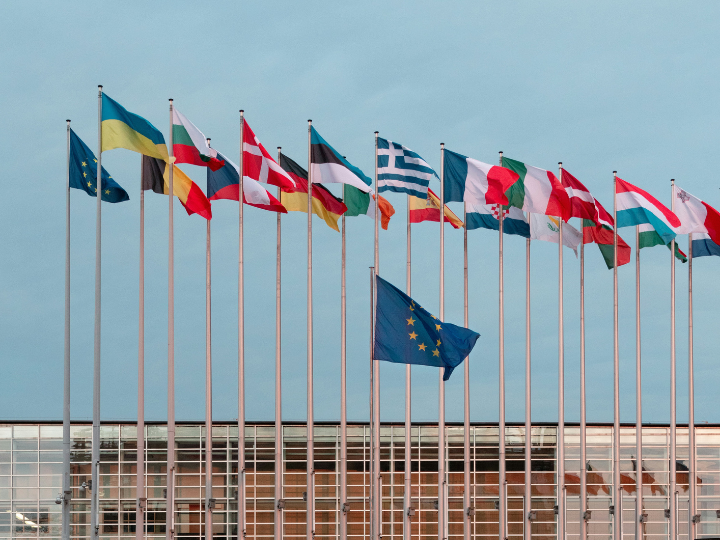The number of people held in European prisons decreased by 6.8% from 2014 to 2015, although prison overcrowding remained a problem in 15 countries, according to the latest Council of Europe Annual Penal Statistics (SPACE*)

In 2015, 1.404.398 people were held in penitentiary institutions across Europe, which is 102.880 inmates fewer than the previous year1. The incarceration rate (Prison Population Rate), which is often used as an indicator of how punitive anti-crime policies are, also fell by 7% from 124 inmates to 115.7 inmates per 100.000 inhabitants2. Council of Europe Secretary General Thorbjørn Jagland said: “The drop in the overall number of people in prison in Europe is welcome. Increasing the use of alternative sentences does not necessarily lead to higher crime rates but can help to reintegrate offenders and tackle overcrowding.”
In 2015, 1.404.398 people were held in penitentiary institutions across Europe, which is 102.880 inmates fewer than the previous year. The incarceration rate (Prison Population Rate), which is often used as an indicator of how punitive anti-crime policies are, also fell by 7% from 124 inmates to 115.7 inmates per 100.000 inhabitants.
Council of Europe Secretary General Thorbjørn Jagland said: “The drop in the overall number of people in prison in Europe is welcome. Increasing the use of alternative sentences does not necessarily lead to higher crime rates but can help to reintegrate offenders and tackle overcrowding.”
Significant reductions in the incarceration rate were recorded in Greece (-18.8%), Croatia (-10.2%), Denmark (-11.9%), Northern Ireland (-9.7%), The Netherlands (-9.5%), Lithuania (-8.8%), Romania (- 8.6%) and Slovenia (-8.2%). On the other hand, the incarceration rate grew most in Georgia (+20.5%), “the Former Yugoslav Republic of Macedonia” (+12%), Turkey (+11.6%), the Czech Republic (+11.4%) and Albania (+10.3%).
The countries with the highest incarceration rates were Russia (439.2 inmates per 100,000 inhabitants), Lithuania (277.7), Georgia (274.6), Azerbaijan (249.3), Latvia (223.4), Turkey (220.4) and the Republic of Moldova (219.9).
The Netherlands (53) and some Nordic countries – namely Finland (54.8), Denmark (56.1) and Sweden (58.6) - appear to be those resorting less often to imprisonment and thus registering the lowest rates.
Despite the overall reduction in the prison population in 2015, there was no progress at the pan-European level to reduce overcrowding, and the number of inmates remained above available places in one third of the prison administrations. The situation improved in some countries and deteriorated in others. The number of inmates for every 100 available spaces in European prisons was 93.7 (93.6 in 2014), but the number of prison administrations suffering from overcrowding grew from 13 to 15.
Prison administrations that continued to be acutely overcrowded were those of “the Former Yugoslav Republic of Macedonia” (138.2 inmates per 100 places), Spain (State Administration) (133.1), Hungary (129.4), Belgium (127), Albania (119.6), France (113.4) and Portugal (113). Other countries that continued to suffer from overcrowding were Serbia (106.4), Slovenia (105.8), Italy (105.6), Austria (103.3) and Romania (101.3).
Three prison administrations which did not suffer from overcrowding in 2014 did experience it in 2015: the Republic of Moldova (with prison density rates of 96.5 in 2014 compared to 117 in 2015), Turkey (95.9 and 101.3) and the Czech Republic (93.2 and 100.4). On the other hand, the situation improved in Greece, where prison density fell from 121.4 inmates to 97.6.
In 2015, inmates serving final sentences represented 73% of the total prison population. Among those prisoners, almost one in five (18.7%) was convicted for drug-related offenses. In Italy, Georgia, Azerbaijan, Estonia, Cyprus, Luxembourg, Montenegro and the Russian Federation this proportion was higher: 25% or more of inmates. The second most common offence for which inmates were serving time was theft (16.2%), followed by homicide (13.2%) and robbery (12.6%).
Almost one in four inmates (24.7%) was serving a final sentence of 1 to 3 years. The proportion of prisoners serving less than one year continued to be relatively high, although it fell from 15% to 13.5%. Prisoners subject to very long custodial terms, such as 10 years and over, life sentences and security measures represented 11.4% of the total prison population.
In 2015, foreign inmates were 10.8% of the total prison population, down from 13.7% in 2014. In Central and Eastern European countries this proportion continued to be very small, whilst it was quite large in Western European countries (in 16 prison administrations, one in every four inmates was a foreigner).
After natural causes, suicide was the most common cause of mortality in prisons, representing 25% of all deaths. One in every four suicides was committed in pre-trial detention.
The survey provides the amount spent per inmate and day of detention in 2014: €52, which is €7 more than in 2013. The total amount spent by the prison administrations in the 44 countries that provided this kind of information was €21 billion.
During 2015 there were 1,239,426 individuals under the supervision of agencies in charge of alternative measures to imprisonment such as probation, community service, curfew orders or electronic monitoring. Only 7.5% of them were awaiting trial, which shows that non-custodial measures are not commonly applied as an alternative to pre-trial detention.
*The SPACE survey is conducted for the Council of Europe by the School of Criminal Sciences of the University of Lausanne, under the direction of Professor Marcelo Aebi. The SPACE I 2015 survey contains information from 45 out of 52 prison administrations in Council of Europe´s member states. The SPACE II contains information from 47 out of 52 probation agencies.




 By: N. Peter Kramer
By: N. Peter Kramer

